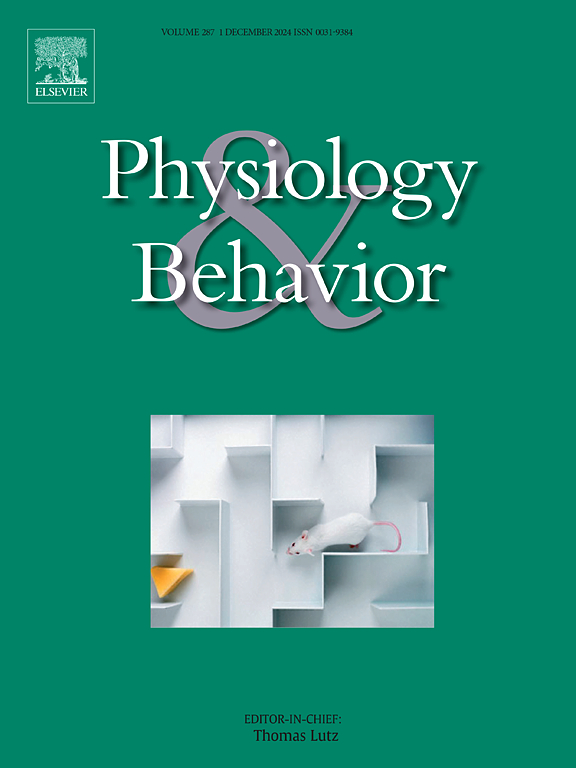Gut microbiome is associated with insula structure in neonates
IF 2.5
3区 医学
Q2 BEHAVIORAL SCIENCES
引用次数: 0
Abstract
The infant brain and gut microbiome both develop rapidly in early infancy. Growing evidence indicates that the gut microbiome plays a critical role in shaping neurodevelopment early in life, possibly through effects on brain regions involved in affective, interoceptive, and sensory processing. This study used magnetic resonance imaging (MRI) and whole genome sequencing of fecal samples to examine associations between the gut microbiome and brain structures in infants at 2 weeks of age. We identified significant relationships between specific gut microbiome characteristics and brain volumes in key regions involved in affective, sensory, and interoceptive processing. Our most consistent findings were associations between gut microbiome and insula volume, suggesting that the insula may be particularly sensitive to gut microbiome influences during the neonatal period. Specifically, a significant negative association between insula volume and the abundance of Veillonella was observed. Alpha diversity (Shannon) and functional pathways were also related to insula structure. Enterobacter was negatively associated with thalamus volume. These findings contribute to the growing evidence of a developing gut-brain axis, highlighting links between the gut and brain as early as 2 weeks of age. Future research should investigate the mechanisms by which specific microbial features impact neurodevelopment by way of the insula, as well as explore the potential long-term implications of these early relationships on sensory, interoceptive, and affective processing, and behavioral outcomes.

新生儿肠道微生物群与脑岛结构相关。
婴儿的大脑和肠道微生物群都在婴儿早期迅速发育。越来越多的证据表明,肠道微生物群在生命早期塑造神经发育方面发挥着关键作用,可能是通过影响涉及情感、内感受和感觉过程的大脑区域。本研究使用脑磁共振成像(MRI)和粪便样本的全基因组测序来检测2周龄婴儿肠道微生物组与大脑结构之间的关系。我们确定了特定肠道微生物组特征与涉及情感、感觉和内感受处理的关键区域的脑容量之间的显著关系。我们最一致的发现是肠道微生物组组成和脑岛体积之间的关联,这表明在新生儿时期,脑岛可能对肠道微生物组的影响特别敏感。具体来说,观察到脑岛体积与细孔菌丰度之间存在显著的负相关。α多样性(Shannon)和功能通路也与脑岛结构有关。肠杆菌与丘脑体积呈负相关。这些发现为肠脑轴发育提供了越来越多的证据,强调了肠道和大脑之间早在两周大时就存在的联系。未来的研究应探讨特定微生物类群和多样性模式通过脑岛影响神经发育的机制,并探索这些早期关系对感觉、内感受、情感加工和行为结果的潜在长期影响。
本文章由计算机程序翻译,如有差异,请以英文原文为准。
求助全文
约1分钟内获得全文
求助全文
来源期刊

Physiology & Behavior
医学-行为科学
CiteScore
5.70
自引率
3.40%
发文量
274
审稿时长
47 days
期刊介绍:
Physiology & Behavior is aimed at the causal physiological mechanisms of behavior and its modulation by environmental factors. The journal invites original reports in the broad area of behavioral and cognitive neuroscience, in which at least one variable is physiological and the primary emphasis and theoretical context are behavioral. The range of subjects includes behavioral neuroendocrinology, psychoneuroimmunology, learning and memory, ingestion, social behavior, and studies related to the mechanisms of psychopathology. Contemporary reviews and theoretical articles are welcomed and the Editors invite such proposals from interested authors.
 求助内容:
求助内容: 应助结果提醒方式:
应助结果提醒方式:


